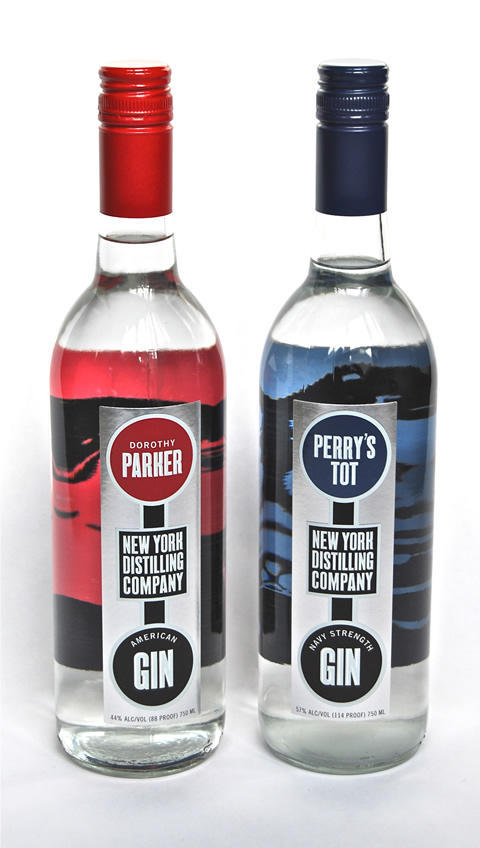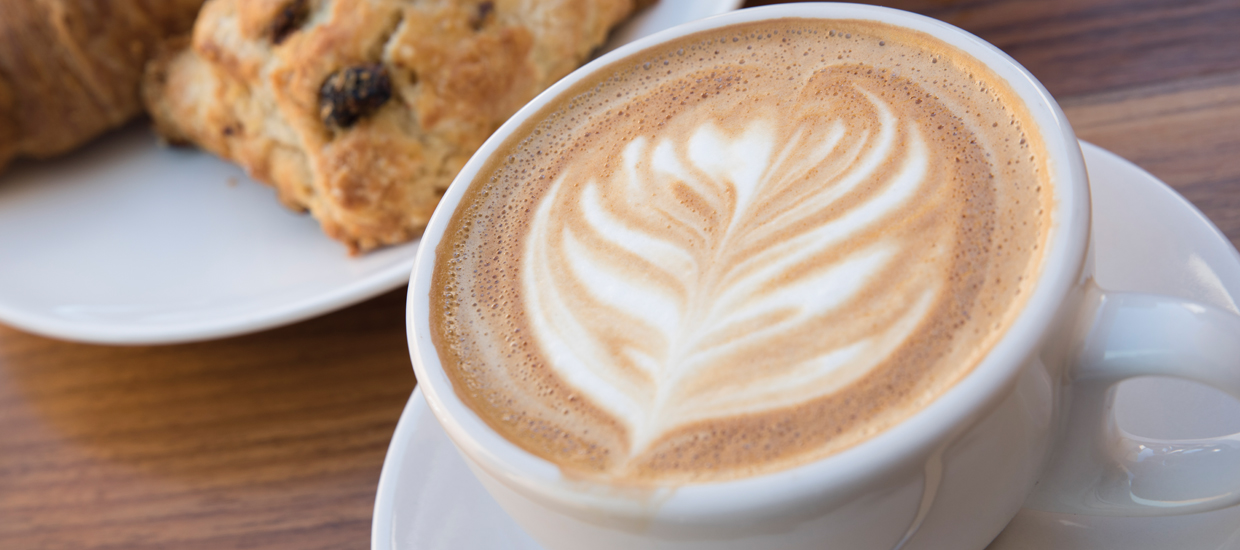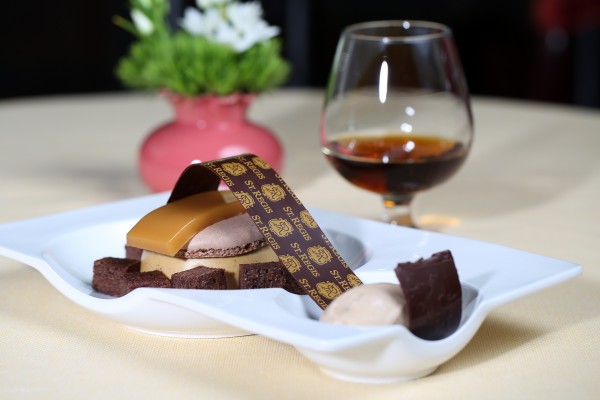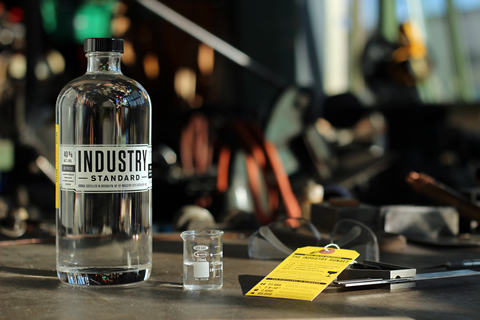
Craft distilleries revive New York’s spirited culture.
By Andrea Landis and Bespoke Magazine Staff

Ambition in New York City reaches heights that rival the city’s skyscrapers. Renowned singers, like Frank Sinatra and the Great American Songbook team of Richard Rodgers and Lorenz Hart—among many others who have found inspiration in the city—have dedicated odes to New York’s superb ability to transform a dream into reality.
It is these enterprising dreams that have conjured artisanal food movements, as the state’s landscape is now teeming with diverse homemade creations, ranging from pickles to coffee and chocolate. Craft institutions are a refreshing departure from the mainstream norm, and there is no better place than the nation’s creative capital to express individuality by putting a new spin on old favorites.
The latest, and perhaps most popular, arena to receive a production makeover is the spirits industry. Today, an estimated 20 craft distilleries are now dotting the city, offering spirits made from scratch. Whether your liquor of choice is derived from grains or berries, the city’s craft distilleries and their carefully concocted products will intoxicate visitors with local spirit.
Taste of Time
Throughout history, a shadow has been cast over the distilling industry in New York in the form of rules and regulations restricting the growth of distilleries. Even at the height of the trade in the early 1800s, when thousands of small distilleries were common storefronts that populated the streets of New York, lawmakers deemed many institutions illegal and sought to close operations on a regular basis. Then, in 1920, the National Prohibition Act—known informally as the Volstead Act—completely turned off the taps of the remaining distilleries, eliminating the profound scent of distillation that once filled New York’s air. State regulations banning small-batch distilling operations maintained their foothold well past Prohibition, and the odds continued to shrink for the once-booming distilling industry to make its comeback in the Empire State.
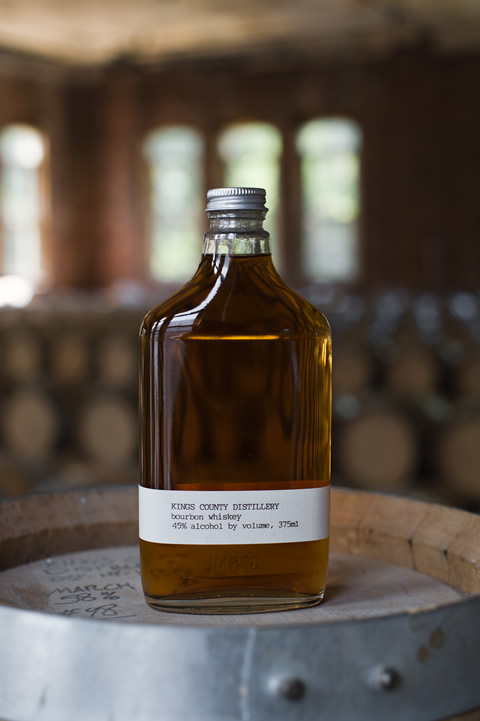 Fast forwarding some 80 years, state laws started offering a bit of flexibility for the production of local liquor in 2002. That dim light of hope turned into a searchlight of opportunity when the New York State Liquor Authority introduced the Farm Distillery Law in 2007 as a way to promote state agriculture. Such farm licenses permit the production and sale of liquor in small batches by independent distilleries as long as a bulk of their ingredients are sourced from New York, in turn upping the demand for both locally grown grain and locally made spirits.
Fast forwarding some 80 years, state laws started offering a bit of flexibility for the production of local liquor in 2002. That dim light of hope turned into a searchlight of opportunity when the New York State Liquor Authority introduced the Farm Distillery Law in 2007 as a way to promote state agriculture. Such farm licenses permit the production and sale of liquor in small batches by independent distilleries as long as a bulk of their ingredients are sourced from New York, in turn upping the demand for both locally grown grain and locally made spirits.
Kings County Distillery in New York City was the first to open under the new farm licensure laws in 2010, confirming its status as the oldest operating whiskey distillery in the city. In reverence of its origins, the company operates out of the 115-year-old Paymaster Building in the historic Brooklyn Navy Yard, which also happens to be the site of the Brooklyn Whiskey Wars of the 1860s that broke out after the federal government attempted to dismantle distilleries that failed to pay taxes.
Production Process
While essentially any spirit can be crafted in a distillery, Kings County Distillery focuses solely on the production of whiskey. “The commitment came to us mostly because we happen to like whiskey more than other spirits, but also because it’s arguably the most challenging to make,” says Colin Spoelman, one of Kings County Distillery’s co-founders and a former moonshiner from Kentucky.
Spoelman partnered with David Haskell, the great-grandson of a Prohibition-era bootlegger from New York and current deputy editor of New York magazine, to handcraft bourbon, moonshine and chocolate whiskey from grain to glass. Kings County does it all from mashing to fermenting, distilling to aging, and bottling to inventorying.
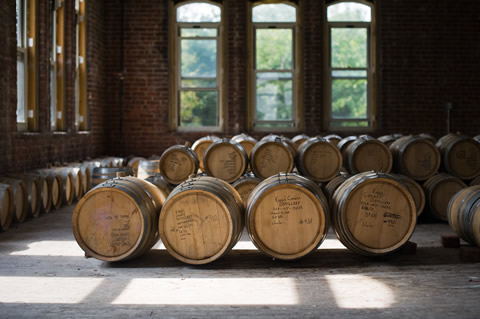
“A visit to the distillery is really the best way to get to know us,” Spoelman says. A walk through the building introduces visitors to the “Boozeum,” a display of historical photos and equipment that documents the city’s distillation history, and the distillery’s impressive barrel inventory room that crafts the Midwest-inspired spirits with an East Coast attitude.
In order for the spirit to qualify as legitimate bourbon, the aging process is conducted in proper new American-oak barrels. The distillery also added a small cornfield to its yard to infuse its spirits with hyperlocal American corn. Mixed with authentic Scottish barley, the final product is a genuine recreation of the brown liquor.
“… People once thought bourbon made in Brooklyn was a crazy idea and some still insist, incorrectly, that bourbon must legally come from Kentucky,” Spoelman adds. “I’d argue as a Kentucky native myself that we are extending the idea of what bourbon can be: a smooth, flavorful spirit that pays homage to its roots but also proudly embodies the urban provenance where it has been reborn.”
With that same revival mentality, Tom Potter, co-founder of the iconic Brooklyn Brewery from the late 1980s, teamed up with his son Bill and distilled spirit expert and historian Allen Katz in 2011 to step into the reawakening of craft gin. Operating as the New York Distilling Co., Tom Potter took on the role of businessman; Bill Potter served as the distiller; and Katz acted as the tastemaker. The team produces three distinct gins out of its distillery on the corner of Leonard and Richardson streets in Brooklyn by day, and serves Katz’s complex layered cocktails in the adjacent bar on the premises, the Shanty, by night.
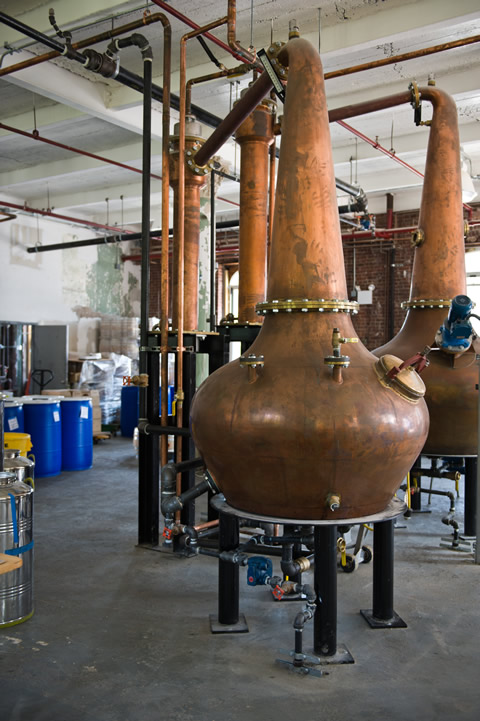
New York Distilling Co. uses a 1,000-liter, German-made, hybrid pot-column still to create three types of gin. One of its signature productions is the 57 percent alcohol Perry’s Tot gin, named after local war hero Matthew Calbraith Perry, who served as a commodore of the Brooklyn Navy Yard in the early 1840s. In fact, the Navy-strength gin is capable of igniting gunpowder should it come in contact with a firearm.
Another offering is a tribute to the early-20th century satirical writer and gin enthusiast Dorothy Parker. The American gin is a blend of both traditional and contemporary botanicals including juniper, elderberries, citrus, cinnamon and hibiscus for a fruity taste. Finally, the triple-distilled Chief Gowanus New-Netherland gin dates back to a recipe from 1809 that calls for cluster hops and rye whiskey. New York Distilling Co. adds juniper berries and lets the mixture age three months in an oak barrel for a smooth taste.
Breeding Creativity
Beyond experimenting with ingredients, small-batch production also allows distilleries to tinker with all aspects of the manufacturing process. With a strong sense of do-it-yourself ethos, a group of five collective thinkers launched Industry City Distillery in Brooklyn’s Sunset Park, where they make their flagship Industry Standard vodka from the sixth floor of an industrial warehouse complex. The masterminds’ innovative and independent spirit has come to distinctly define the new era of the distilling industry.
Unique to the distillery is its homemade biotech equipment that was inadvertently invented by Dave Kyrejko, Industry City’s head distiller and a biological engineer who was building a series of symbiotic plant ecosystems when he stumbled upon a new fermentation and distillation process for producing vodka. The team then designed stills that allow for a more efficient process, according to Kyrejko. In attempts to be even more resource-conscious, the experimental distillery also creates its vodka using beet sugar.
“We developed a different way of fermenting [and] started growing our sugar beet yeast in-house … to create a vodka that was flavorful yet exceptionally smooth,” Kyrejko says.
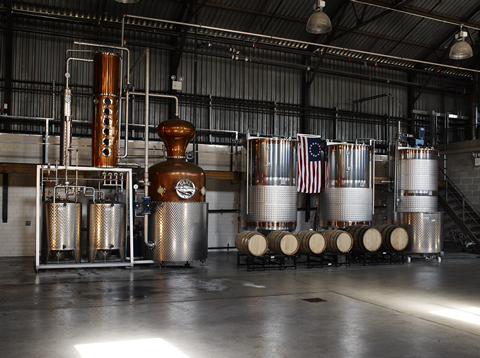
The multistep process starts in the building’s reactor room in 6-foot tall glass tubes, which ferment yeast faster without producing solid waste like other traditional methods. Also, the liquid produced is 14 percent alcohol by volume—roughly 4 percent more than what other methods can yield. The “wash” is then transported to the custom-built stills where it’s stripped of water to increase its ABV (alcohol by volume) and then broken down into different compounds for the team to select the most subtle and desired flavors.
Such an unconventional production has come to equal uncompromising quality in Industry City’s case. Because vodka is a clear, unaged spirit, the distillery’s team takes painstaking efforts to ensure they have a streamlined production process. Each sip of the vodka—which is recommended neat—invokes fruity notes with hints of vanilla and spices.
The company’s focus on construction with no margin for error is evident in the taste of Industry Standard—a taste that is tweaked daily to meet demands and feedback from customers. In fact, some processes have been redesigned multiple times; the current Industry Standard vodka is the fifth version of the spirit.
The influx of experimentation has made this second coming of the cocktail culture even more refined in New York, and it allows the process to evolve as quickly as drinkers’ palates. The distilling industry has experienced countless changes in its history and will continue to do so, but one thing that is sure to remain is the presence of craft distilleries—especially in New York City.
Crafty Tastes
Bars and eateries across town feature craft spirits in signature libations, allowing patrons the opportunity to taste the hard work of local distilleries.
The King Cole Bar & Salon at The St. Regis New York offers Widow Jane bourbon, a craft spirit made at Cacao Prieto in New York. Aged within an oak cask, the bourbon contains a distinctly spicy taste. King Cole bartenders recommend mixing it with bitters, water and sugar in an Old-Fashioned garnished with a maraschino cherry and an orange wedge. (212-339-6857; kingcolebar.com)
At Eleven Madison Park, the focus is on the agricultural bounty of New York as well as centuries-old culinary traditions—similar to Kings County Distillery. In fact, the restaurant, located on Madison Avenue, invites patrons to try the bourbon in its inventive Voodoo Down cocktail, a mix of the liquor with Trinidadian rum, St. Germain, lemon, honey and ginger. (212-889-0905; elevenmadisonpark.com)
Harding’s, located on 21st Street, is rooted in patriotism. From the 45-star American flag on the wall to the American-inspired dishes, it’s only fitting that this institution supports local craft distilleries. Its drink selections include Industry City Distillery’s Industry Standard vodka, in addition to other contemporary classics. Try Industry Standard in the Harding’s Smash with fresh squeezed lemon, pure cane sugar and mint, or in the Harding’s Sour with fresh squeezed lime, pure cane sugar and egg whites. (212-600-2105; hardingsnyc.com)

